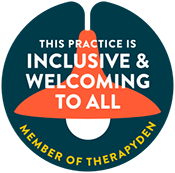Obsessive–Compulsive Disorder (OCD) can be difficult to spot from the outside, especially within the context of a relationship. Many people imagine OCD as constant hand-washing or a need for perfect organization, but in romantic partnerships it often shows up in far more subtle and emotional ways. Intrusive thoughts, fears of making a “wrong” choice, or rituals aimed at relieving anxiety can all quietly shape how someone shows up with their partner- sometimes without either person realizing OCD is the driving force.
When these patterns unfold inside a relationship, they can impact trust, communication, intimacy, and the overall sense of connection. A partner with OCD might seek repeated reassurance, overanalyze every interaction, or feel overwhelmed by guilt or doubt. Their partner may feel confused, drained, or unsure how to help. Understanding what OCD can look like in a relationship is the first step toward navigating it with empathy, clarity, and healthier patterns for both people involved.















